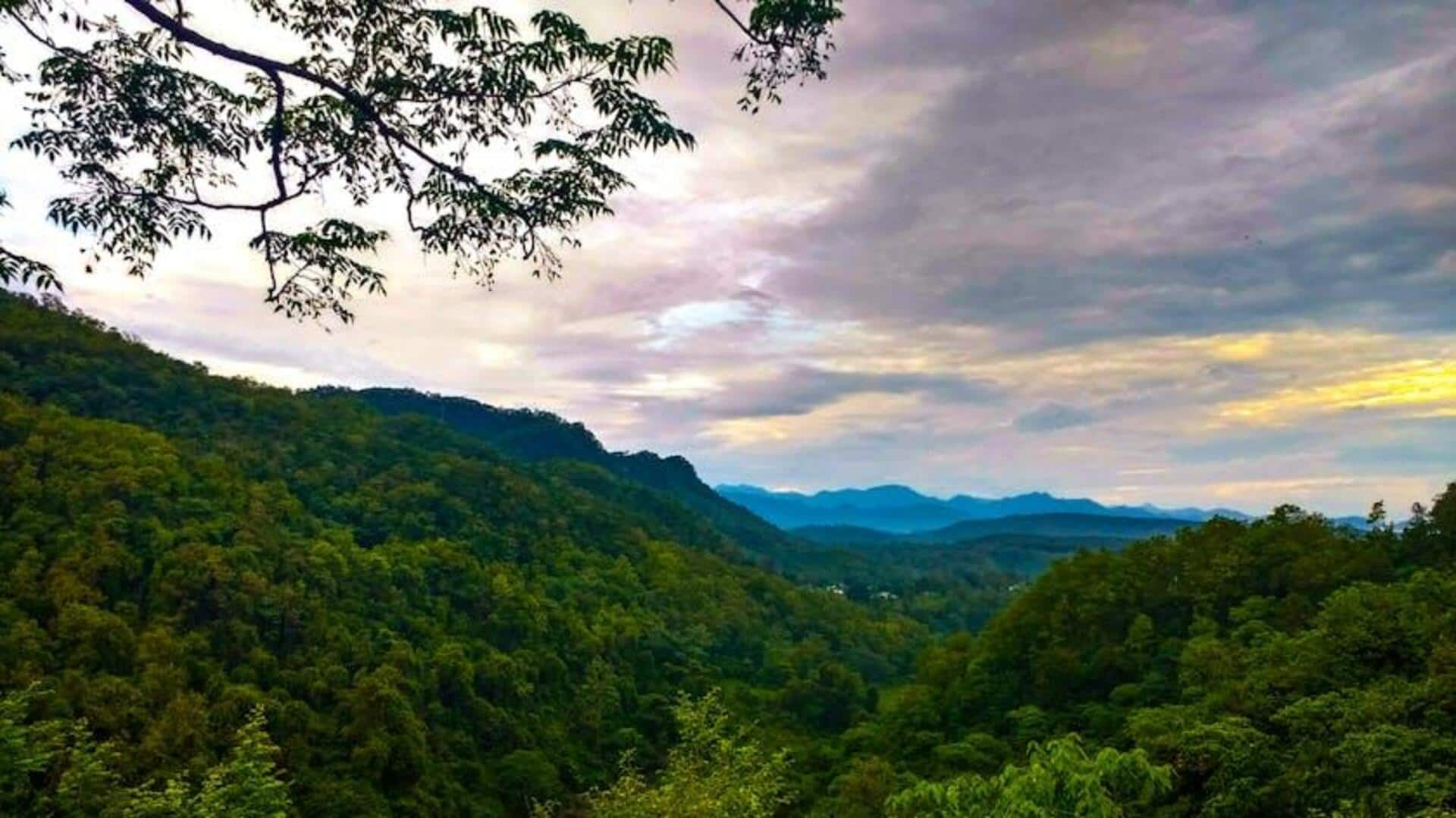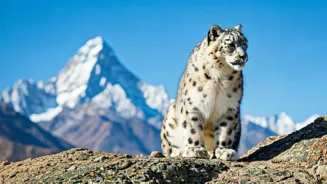The Elusive Snow Leopard
The Snow Leopard, scientifically known as *Panthera uncia*, is an iconic inhabitant of the Himalayan region. This magnificent creature is perfectly adapted
to survive in the harsh, high-altitude environment. Their thick fur provides insulation against the extreme cold, while their large paws act like snowshoes, enabling them to move easily across snowy terrain. These solitary predators are masters of camouflage, blending seamlessly with the rocky landscapes. They primarily hunt blue sheep and other mountain ungulates. Encountering a snow leopard is a rare and unforgettable experience, a testament to the wild beauty of the Himalayas.
The Majestic Himalayan Monal
The Himalayan Monal, or *Lophophorus impejanus*, is a vibrant pheasant known for its stunning iridescent plumage. The male monal is particularly striking, with its colorful combination of red, green, blue, and bronze feathers. These birds are found in the higher reaches of the Himalayas, inhabiting open forests and alpine meadows. They are ground-dwelling birds, foraging for seeds, roots, and insects. The Monal is the state bird of Uttarakhand and the national bird of Nepal, reflecting its cultural significance. Spotting a Himalayan Monal adds a touch of brilliance to the already magnificent Himalayan scenery.
The Agile Himalayan Tahr
The Himalayan Tahr, *Hemitragus jemlahicus*, is a large, sure-footed ungulate perfectly suited to the steep mountain slopes. They possess a shaggy coat of reddish-brown fur, providing warmth in the cold climate. These animals are known for their agility, effortlessly navigating the rocky terrain. They are primarily grazers, feeding on grasses and herbs found in their high-altitude habitat. The Himalayan Tahr is a social animal, often seen in herds, and their presence is a significant element of the Himalayan ecosystem. Observing these creatures reveals the remarkable adaptation of life in challenging environments.
The Cunning Red Panda
The Red Panda, *Ailurus fulgens*, is a captivating creature that, despite its name, is not closely related to the giant panda. With its reddish-brown fur, bushy tail, and playful demeanor, the red panda is a beloved resident of the Himalayas. They are primarily arboreal, spending much of their time in trees. They feed on bamboo, fruits, and insects. They are often found in the Eastern Himalayas, in areas with dense forests. The presence of red pandas is an indicator of healthy forest ecosystems. Seeing this shy animal adds a special charm to any Himalayan journey, making the mountains even more memorable.
The Powerful Himalayan Brown Bear
The Himalayan Brown Bear, *Ursus arctos isabellinus*, is a large and powerful predator found in the higher reaches of the Himalayas. This bear boasts thick fur to withstand the cold climate, and they are omnivorous, eating a variety of plants, fruits, and small animals. They are often seen foraging for food during the warmer months, and they retreat to dens during winter hibernation. The Himalayan Brown Bear plays a crucial role in maintaining the balance of the Himalayan ecosystem. Spotting one of these impressive animals is a rare treat, a reminder of the raw power and beauty of the wild.
The Elusive Musk Deer
The Himalayan Musk Deer, *Moschus leucogaster*, is known for the musk gland in males, highly valued for its use in traditional medicine and perfume. This small, deer-like creature inhabits the high-altitude forests and alpine meadows of the Himalayas. They are solitary animals, with a preference for dense vegetation. They primarily feed on herbs, lichens, and leaves. The Himalayan Musk Deer is considered an endangered species due to habitat loss and poaching. Observing these animals indicates a delicate ecosystem and the vital importance of conservation efforts to preserve this species and its environment.
The Grazing Blue Sheep
The Blue Sheep, or Bharal (*Pseudois nayaur*), is a fascinating animal found in the rugged terrains of the Himalayas. This ungulate is not a true sheep but is named for its bluish-grey coat, which provides camouflage in the rocky environment. They are agile climbers and grazers, feeding on grasses and herbs found at high altitudes. Blue Sheep live in herds, moving across slopes in search of food. They are an important prey species for predators like snow leopards. Seeing Blue Sheep demonstrates the interconnectedness of life in the Himalayas.
The Playful Tibetan Wolf
The Tibetan Wolf, *Canis lupus chanco*, is a subspecies of the gray wolf that has adapted to the harsh conditions of the Tibetan Plateau and Himalayan region. These animals are known for their thick fur and powerful build, essential for surviving in the cold climate. They are social animals, living in packs, and they are apex predators, preying on a variety of ungulates, including blue sheep and wild yak. The Tibetan Wolf plays an essential role in regulating the populations of other animals within its ecosystem. Witnessing a Tibetan wolf is to see the power of adaptation and survival in a challenging environment.
The Agile Tibetan Antelope
The Tibetan Antelope, also known as Chiru (*Pantholops hodgsonii*), is an iconic species of the Tibetan Plateau. They are famous for their fine, soft wool called shahtoosh. They inhabit the high-altitude grasslands and are well-adapted to the harsh environment. The Tibetan Antelope is a migratory species, known for its remarkable long-distance journeys. Seeing a Chiru is a privilege, as they are endangered due to poaching for their wool. Their survival represents a crucial conservation effort.
Himalayan Black Bear
The Himalayan Black Bear, *Ursus thibetanus*, is a large bear species distinguished by the crescent-shaped white or cream-colored mark on its chest. This bear species occupies the forested areas of the Himalayas, from lower altitudes to higher reaches, surviving in varied habitats. The bear is omnivorous and consumes a diverse diet of plants, fruits, insects, and small animals. These bears are adept at climbing and often spend time in trees. The presence of the Himalayan Black Bear underscores the rich biodiversity of the region.





